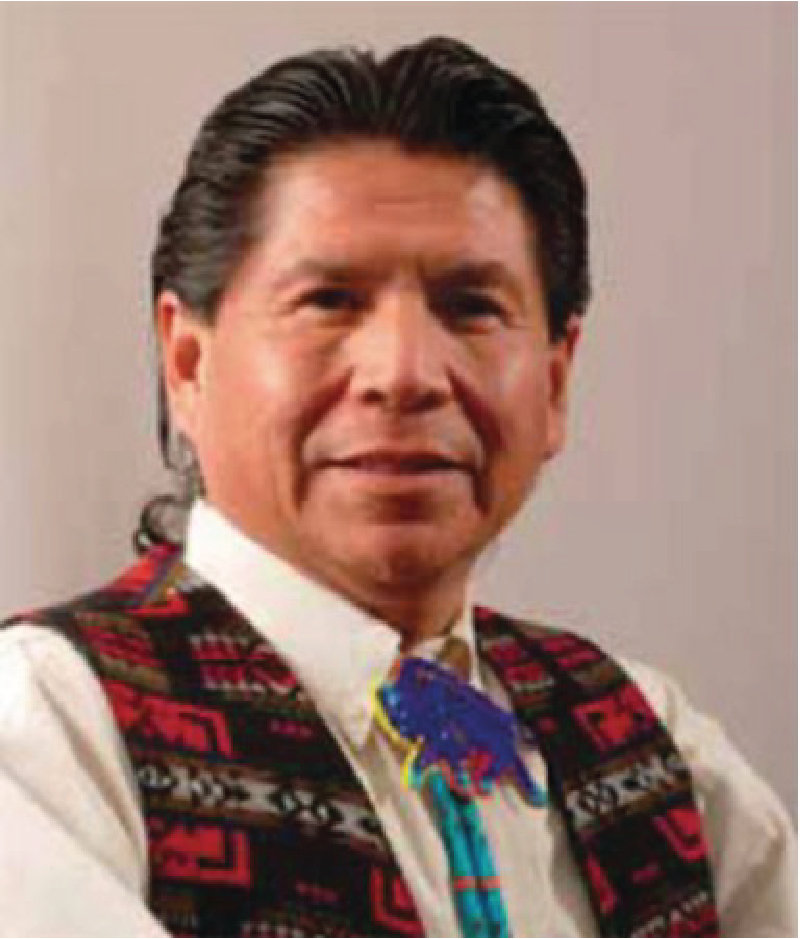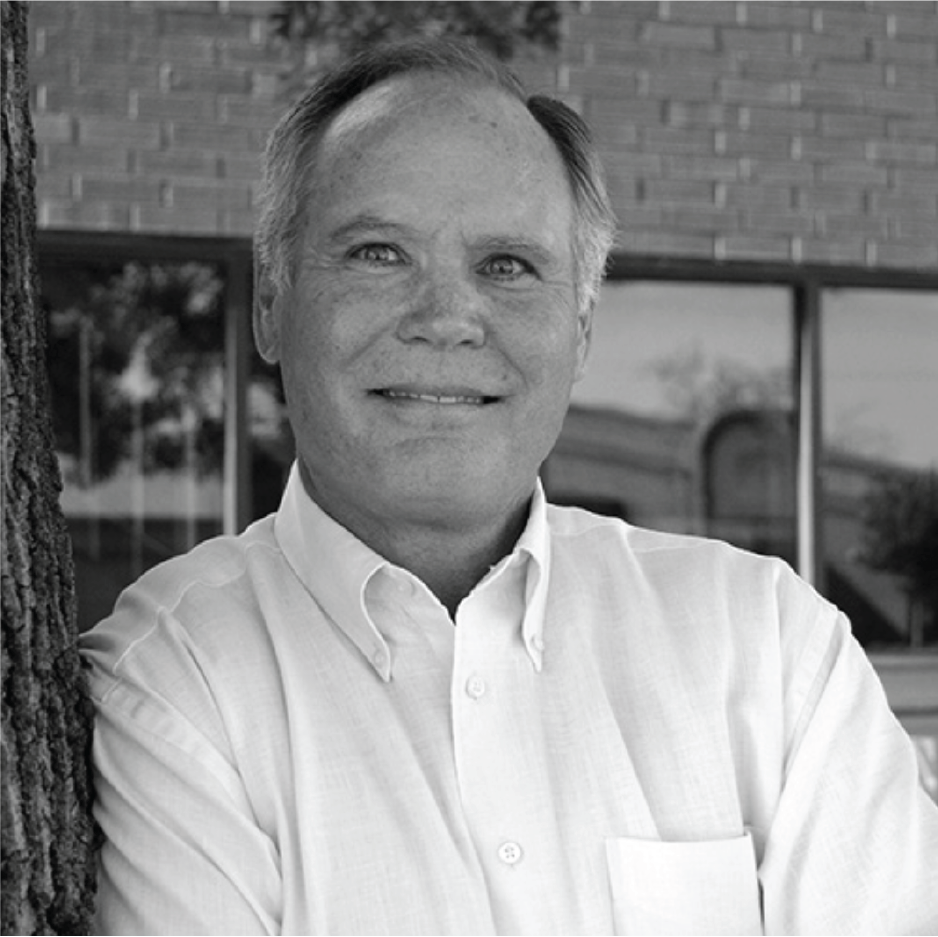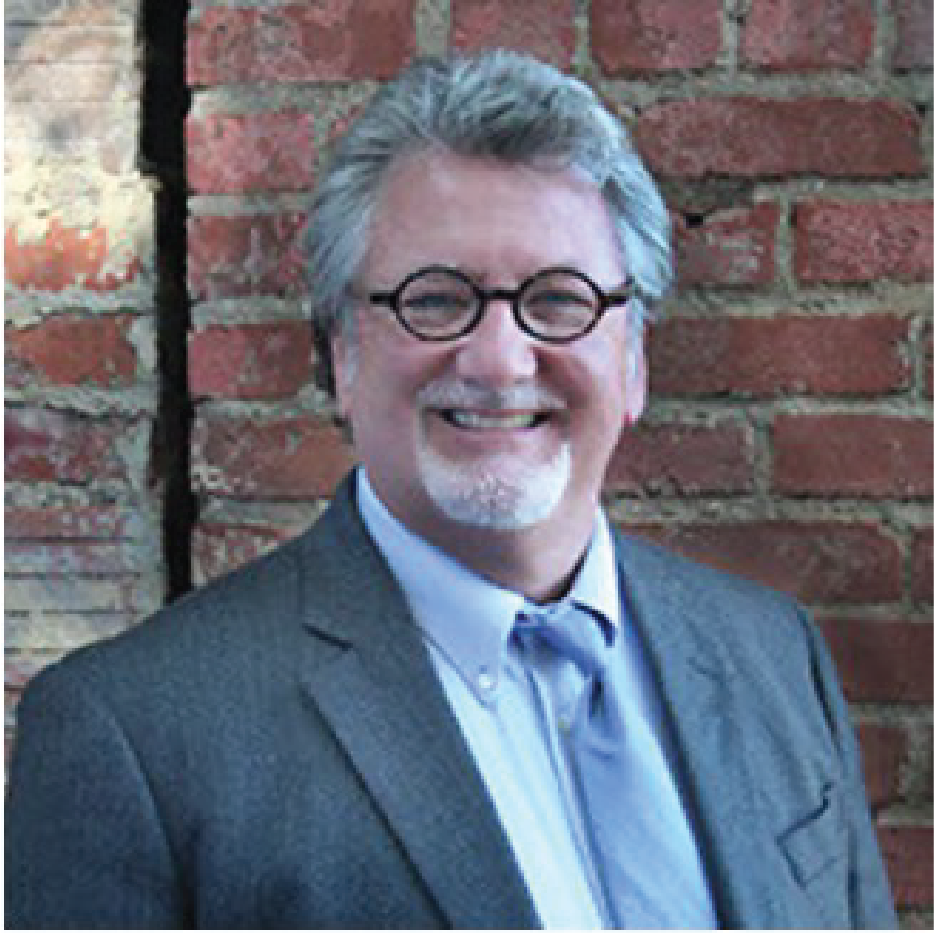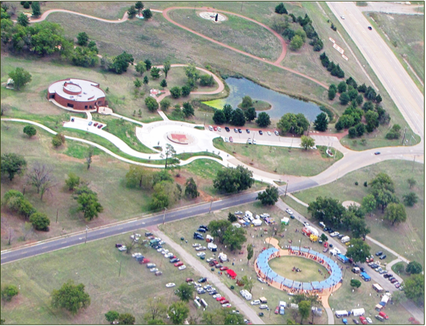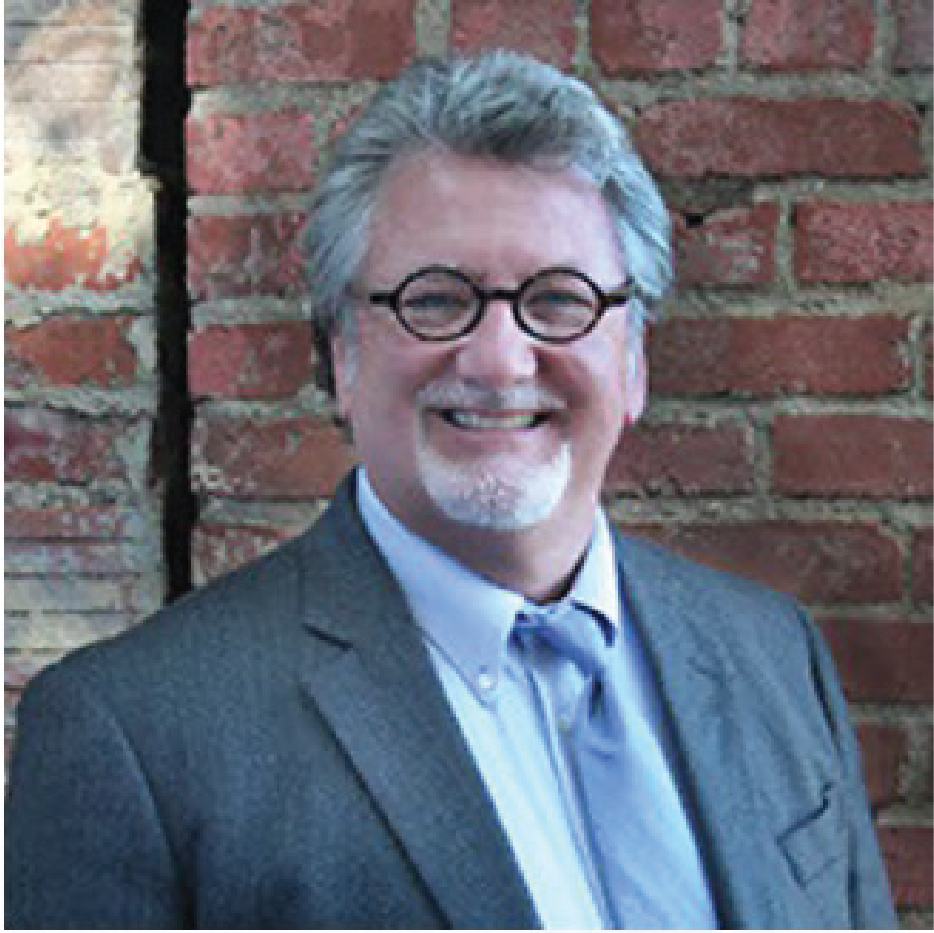The Project History
In 1993, a monument was unveiled in downtown Ponca City. The plans for that monument and the celebration of its unveiling pulled back the curtain on the cultural differences and the discomfort that existed between the Native American and the non-Native America parts of our community.
Two community leaders, Carl Renfro, (then chairman/CEO of Pioneer Bank & Trust) and Genevieve Pollack (then Chair of the Ponca Tribe of Oklahoma) came together to discuss those differences. Approaching the situation from different perspectives, but having a common goal of community wellbeing, they agreed to lead an effort to educate the community and start the healing process. They involved community leaders from both parts of the community along with elected officials from each of the area tribes, sharing a commitment to their common goal.
The Ponca City Native American Foundation (renamed Standing Bear Native American Foundation, Inc. in 1999) was formed in 1993 and incorporated in 1994. Based in Ponca City, Kay County, Oklahoma, the 501(c)(3) foundation was organized to address concerns about the perceived lack of recognition of Native American contributions to the area's culture. Ponca City, a community of approximately 24,000 is surrounded by Native American communities with a combined population of almost 35,000. Although these two groups are geographic neighbors sharing economic influences, there is a separation of cultures that has been perpetuated by years of angry misunderstandings. A primary part of the mission of the Standing Bear Native American Foundation is to promote intercultural understanding. As we continue with the Standing Bear project, we are achieving closer cooperation not only between the Native American and non-Native American communities, but also among the participating tribes.
Two community leaders, Carl Renfro, (then chairman/CEO of Pioneer Bank & Trust) and Genevieve Pollack (then Chair of the Ponca Tribe of Oklahoma) came together to discuss those differences. Approaching the situation from different perspectives, but having a common goal of community wellbeing, they agreed to lead an effort to educate the community and start the healing process. They involved community leaders from both parts of the community along with elected officials from each of the area tribes, sharing a commitment to their common goal.
The Ponca City Native American Foundation (renamed Standing Bear Native American Foundation, Inc. in 1999) was formed in 1993 and incorporated in 1994. Based in Ponca City, Kay County, Oklahoma, the 501(c)(3) foundation was organized to address concerns about the perceived lack of recognition of Native American contributions to the area's culture. Ponca City, a community of approximately 24,000 is surrounded by Native American communities with a combined population of almost 35,000. Although these two groups are geographic neighbors sharing economic influences, there is a separation of cultures that has been perpetuated by years of angry misunderstandings. A primary part of the mission of the Standing Bear Native American Foundation is to promote intercultural understanding. As we continue with the Standing Bear project, we are achieving closer cooperation not only between the Native American and non-Native American communities, but also among the participating tribes.
The Mission• To educate all peoples to the important role and heritage of Native Americans in the development of our country’s diverse culture;
• To increase economic and educational opportunities for Native Americans; • To promote intercultural understanding and communication; • To provide a catalyst to improve and enhance the self-worth of Native Americans. Project Development
|
Artist
|
Oreland C. Joe, a Southern Ute/Navajo was selected from over fifty applicants from around the world. Joe was the first Native American elected to the prestigious Cowboy Artists of America and has been featured in numerous national magazines and art shows. His depiction of Standing Bear embodies the dignity and wisdom of the tribal Chief, as well as a sense of the hardships he endured. Oreland maintains a close relationship with the Standing Bear project and has returned to the park on several occasions.
Keith Franklin, Standing Bear Landscape Architect
Architect
|
Choosing the right landscape architect to help in the development of Standing Bear Park was a critical decision. Keith Franklin (LandPlan Consultants, Inc.) was selected to do the initial park design and he and his associates have been the landscape designers on every subsequent phase of park development. He also designed the permanent pow wow arbor. By the time we complete the pond restoration project, our work together will have spanned three decades. It’s a special relationship and we are grateful.
Whit Todd, Standing Bear Museum Architect
From the very beginning there were plans for a museum at Standing Bear Park. We started working with architect Whit Todd in 2000. His initial design came to life in 2007 after we struggled with capital funding for many years. He stuck-it-out with us and today his presence is felt in the building we call home. Whit has practiced architecture throughout the United States for over three decades and is now the Principal at Todd Architecture Group.
The Making of a Memorial
Tribal Viewing Courts
With the 2000 unveiling of the tribal viewing courts, the Foundation paid tribute to the six area tribes: the Kaw, Osage, Otoe-Missouria, Pawnee, Ponca, and Tonkawa.
A visitor to the park will find tribal “stories” portrayed through a variety of means, including decorative concrete, with colored, sandblasted and inlaid designs, written information on plaques, carefully reproduced photographs, and audio information.
These viewing courts are linked by a walking trail that has an orientation court at each end and ends at the statue viewing court.
A visitor to the park will find tribal “stories” portrayed through a variety of means, including decorative concrete, with colored, sandblasted and inlaid designs, written information on plaques, carefully reproduced photographs, and audio information.
These viewing courts are linked by a walking trail that has an orientation court at each end and ends at the statue viewing court.
Pow Wow Arbor & Arena
Each year, the six area tribes come together to host the annual Standing Bear Pow Wow. This event, which is held the last Friday and Saturday in September, has become a community favorite and provides a way to learn about the traditions of all six tribes.
In 2005, the Foundation dedicated a permanent pow wow arbor and arena located just west of the memorial park. This steel structure features a concrete walkway around the arena with inlaid granite plaques. These plaques bear photos of dancers as well as text about the dances someone would most likely see at a pow wow in this area.
In 2005, the Foundation dedicated a permanent pow wow arbor and arena located just west of the memorial park. This steel structure features a concrete walkway around the arena with inlaid granite plaques. These plaques bear photos of dancers as well as text about the dances someone would most likely see at a pow wow in this area.
Museum & Education Center
The Standing Bear Museum and Education Center is a uniquely designed building that creatively defines a space set aside to honor the Native American culture in the Ponca City community. It houses the museum, education center, art gallery and administrative offices and was opened in 2007.
The six area tribes are honored with display cases in the rotunda. Throughout the building there are sculptures, paintings, and photographs. Included in those sculptures are the original models that were submitted when the Foundation was looking for an artist to create the Standing Bear Statue.
The six area tribes are honored with display cases in the rotunda. Throughout the building there are sculptures, paintings, and photographs. Included in those sculptures are the original models that were submitted when the Foundation was looking for an artist to create the Standing Bear Statue.
Scenic Byway Project
The Osage Nation Heritage Trail was designated as an Oklahoma Scenic Byway with one end of the byway in Ponca City and the other in Bartlesville (stretching along 70 miles of US HWY 60.)
In 2012 the Standing Bear Foundation completed enhancements dedicated to the byway. Signage, parking, and a welcome wall surround a large, colorful concrete map designed to show the relationship of the byway to the area tribal lands.
There is also a Founders Court honoring the co-founders of the Standing Bear project. Centered in that court is a stone topped with a bronze statue titled “Inspiration” created by Allan Houser.
In 2012 the Standing Bear Foundation completed enhancements dedicated to the byway. Signage, parking, and a welcome wall surround a large, colorful concrete map designed to show the relationship of the byway to the area tribal lands.
There is also a Founders Court honoring the co-founders of the Standing Bear project. Centered in that court is a stone topped with a bronze statue titled “Inspiration” created by Allan Houser.
Pond Restoration Project
2021 marked the beginning of a long-awaited project to restore the arrowhead shaped pond in the park. There will be some repair work to the sidewalk as well as the addition of some other amenities. These improvements will be designed to enhance the visitor experience of local citizens as well as travelers who stop along their way.
The formal design phase of the project is now underway, and we are looking forward to starting construction.
The formal design phase of the project is now underway, and we are looking forward to starting construction.
Photograph by Homer Nicholson
Architect
|
From the very beginning there were plans for a museum at Standing Bear Park. We started working with architect Whit Todd in 2000. His initial design came to life in 2007 after we struggled with capital funding for many years. He stuck-it-out with us and today his presence is felt in the building we call home. Whit has practiced architecture throughout the United States for over three decades and is now the Principal at Todd Architecture Group.
